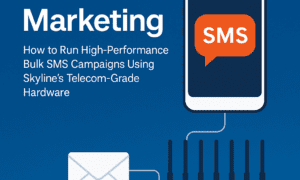Finding the right laptop for your school needs needs careful consideration of several factors, including performance, portability, battery life, and budget. By knowing what to look for, you can find a laptop that not only meets your current needs but also supports your future academic endeavors. Use this guide to make an informed decision and enhance your productivity in 2024.
Processor:
Balancing Performance and Efficiency:
Intel vs. AMD:
Choosing the Right Chip:
The processor is the heart of your laptop, determining its overall performance. Intel and AMD offer excellent options. Intel’s Core i5 and i7 processors are popular for their balance of power and efficiency. AMD’s Ryzen 5 and 7 chips are also excellent, often providing better multi-core performance and integrated graphics.
Consider Your Needs:
For basic tasks like word processing and web browsing, an Intel Core i3 or AMD Ryzen 3 will suffice. However, if you plan to run more demanding software or multitask heavily, opt for an Intel Core i5/i7 or AMD Ryzen 5/7.
RAM:
Ensuring Smooth Multitasking:
How Much RAM is Enough?
RAM is crucial for multitasking and running applications smoothly. For most students, 8GB of RAM is the sweet spot, providing enough memory to handle multiple applications simultaneously. If you plan to use more intensive software, such as video editing or programming tools, consider 16GB of RAM for optimal performance.
Upgradeability:
Some laptops allow you to upgrade the RAM later. This can be a cost-effective way to extend your laptop’s lifespan and improve performance down the line.
Storage:
Speed and Capacity:
SSD vs. HDD:
Speed Matters:
Storage type significantly impacts your laptop’s speed and responsiveness. Solid State Drives (SSDs) are much faster than traditional Hard Disk Drives (HDDs). An SSD will drastically reduce boot times and speed up application loading. For students, a 256GB SSD offers a good balance of speed and storage capacity. If you need more space for files and media, consider a 512GB SSD or a combination of an SSD and HDD.
Cloud Storage Options:
Utilize cloud storage solutions like Google Drive or Dropbox to supplement your laptop’s storage. This allows you to access your files from any device and keeps your data safe.
Display:
Size and Resolution:
Finding the Right Size:
The display size affects both usability and portability. A 13-14 inch display is ideal for most students, offering a good balance between screen real estate and portability. Larger screens, such as 15-16 inches, provide more space for multitasking but are heavier and less portable.
Resolution and Quality:
A Full HD (1920×1080) resolution is recommended for sharp text and clear images. Higher resolutions, like 4K, are great but can be overkill for most student needs and drain the battery faster.
Battery Life:
Staying Powered Throughout the Day:
Importance of Battery Life:
A laptop with good battery life is essential for students who are always on the move. Look for laptops that offer at least 8-10 hours of battery life to ensure you can get through a full day of classes and study sessions without needing to recharge.
Factors Affecting Battery Life:
Battery life can be affected by several factors, including screen brightness, processor efficiency, and background applications. Laptops with energy-efficient processors and displays tend to have longer battery life.
Portability:
Weight and Build Quality:
Lightweight and Durable:
Students need a laptop that is both lightweight and durable. Ultrabooks, known for their slim and lightweight design, are perfect for carrying between classes. Look for laptops that weigh around 3 pounds or less for maximum portability.
Build Quality:
Durable build quality is crucial for a laptop that will be frequently transported. Consider laptops with sturdy materials like aluminum or magnesium alloy. Many manufacturers also offer models with military-grade durability certifications.
Operating System:
Choosing Between Windows, macOS, and Chrome OS:
Windows:
Versatile and Compatible:
Windows laptops offer the most versatility and compatibility with a wide range of software. They are available at various price points and are suitable for most student needs.
macOS:
Ideal for Creatives:
MacBooks are popular among students in creative fields like graphic design, video editing, and music production. They offer excellent build quality, performance, and integration with other Apple products.
Chrome OS:
Budget-Friendly and Simple:
Chromebooks run on Chrome OS and are perfect for students with basic computing needs. They are generally more affordable and have excellent battery life. However, they may not be suitable for running specialized software.
Connectivity:
Essential Ports and Wireless Options:
USB Ports and HDMI:
Ensure your laptop has enough USB ports for peripherals like a mouse, external hard drive, and flash drives. An HDMI port is useful for connecting to external monitors or projectors.
Wi-Fi and Bluetooth:
Modern laptops come with Wi-Fi 6 for faster and more reliable internet connections. Bluetooth 5.0 or higher is also recommended for connecting wireless peripherals.
Keyboard and Touchpad:
Comfort and Precision:
Keyboard Quality:
A comfortable, responsive keyboard is essential for typing long essays and reports. Look for laptops with backlit keyboards, which are helpful for typing in low-light conditions.
Touchpad Responsiveness:
A good touchpad should be responsive and support multi-touch gestures. Some laptops offer precision touchpads that provide a smoother and more accurate experience.
Additional Features:
Enhancements for a Better Experience:
Webcam and Microphone Quality:
With the rise of online classes and video conferencing, having a good webcam and microphone is important. Look for laptops with at least a 720p webcam and noise-canceling microphones.
Security Features:
Security features like fingerprint scanners and facial recognition can add an extra layer of protection to your laptop. These features are becoming more common in mid-range and premium models.
Recommended Laptops for Students in 2024:
Best Budget Option:
Acer Aspire 5:
The Acer Aspire 5 offers excellent value with its Intel Core i5 processor, 8GB of RAM, and 256GB SSD. It has a 15.6-inch Full HD display and a backlit keyboard, making it ideal for students on a budget.
Best Mid-Range Option:
Dell XPS 13:
The Dell XPS 13 is known for its sleek design, excellent performance, and stunning 13.4-inch InfinityEdge display. It comes with an Intel Core i7 processor, 16GB of RAM, and a 512GB SSD, making it perfect for demanding tasks.
Best Premium Option:
MacBook Air M2:
The MacBook Air M2 is a top choice for students seeking a premium experience. It features the powerful Apple M2 chip, 16GB of RAM, and a 512GB SSD. Its 13.3-inch Retina display, lightweight design, and long battery life make it an excellent investment for any student.
Conclusion:
Buying the right laptop for educational needs can be daunting. With so many options available, it’s essential to know what to look for to ensure you get the best value and functionality. In 2024, several key features and specifications make a laptop ideal for students. This comprehensive guide will help you navigate the laptop market and make an informed decision.



































